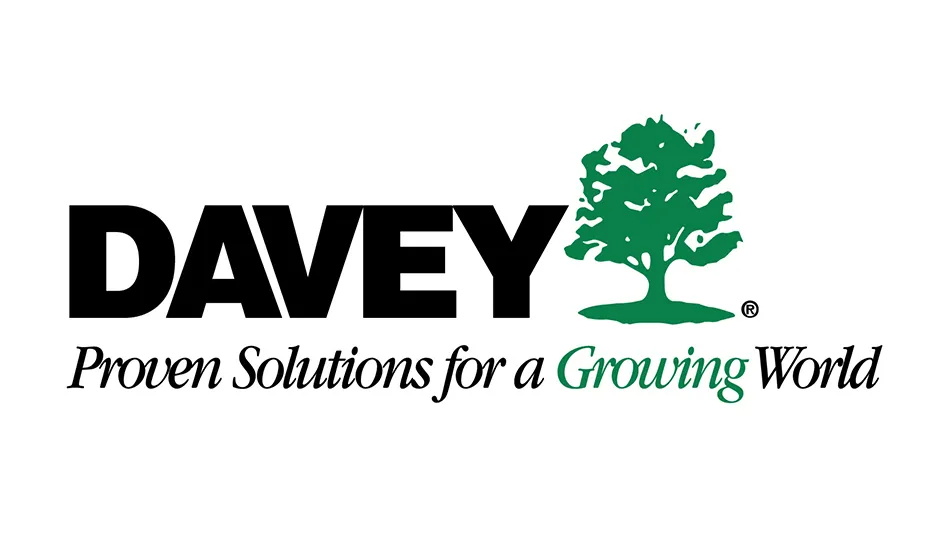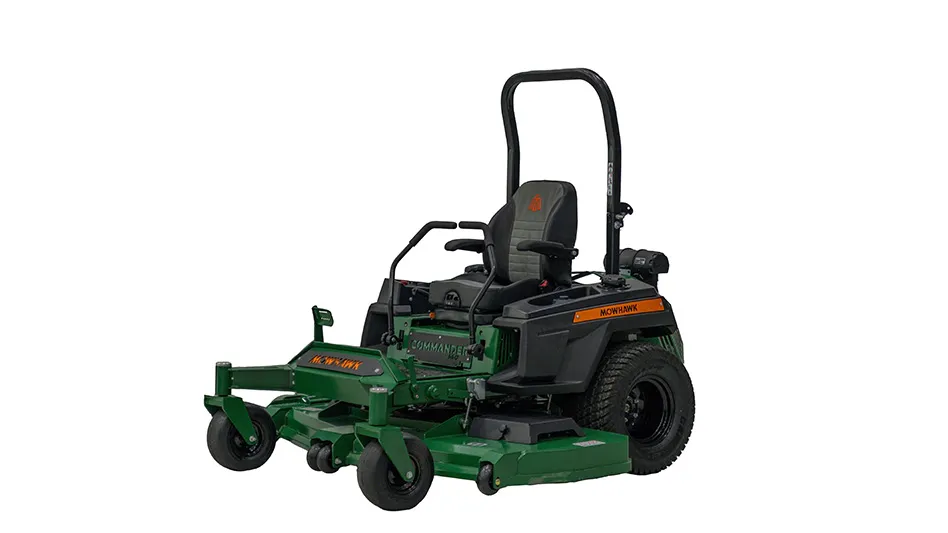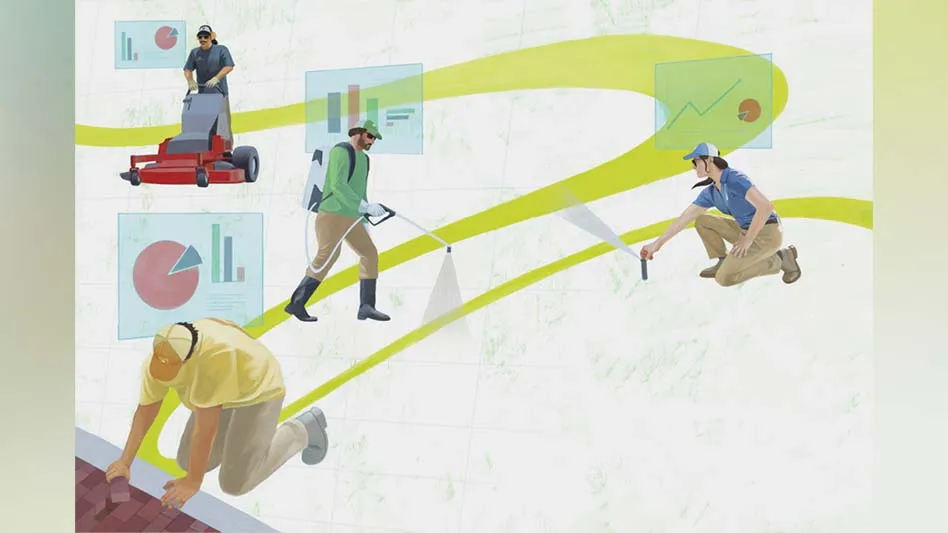
What’s next? That’s the mindset of most entrepreneurs, including business owners in the green industry who are considering ways to grow. Add-on services that complement a core landscape operation can support seasonal revenue. Owners find they can level out income ups and downs or grow deeper relationships with clients who want providers that “do it all.”
This month, Lawn & Landscape spoke with three firms about add-on services they adopted to find out what investment, training and other operational musts were involved to launch and grow their new divisions.
Take a load off
When Chad Stern was purchasing a new truck back in 2010, he noticed that the cost of a roll-off system was $7,000 more than a dump body. While that was certainly an investment for Mowing & More, he considered the possibilities – one of which was the capacity to haul dumpsters.
“That meant we could do our own waste hauling instead of renting dumpsters from other people,” says Stern, president of the College Park, Maryland, business. It also meant he could purchase a few dumpsters and rent them to customers.
“Even if we never rented out a dumpster, eventually we would recoup the cost,” he says. Start-up costs for a dumpster rental division were relatively low. There was a more expensive truck body and a couple thousand dollars to build a website for Dumpsters & More. Each 14-cubic-yard dumpster cost about $3,500. “These are about half the size of the 30 cubic yard dumpsters you see on commercial sites,” Stern says, relating how it fills a demand for waste removal for smaller jobs like roofing, remodeling and estate cleanouts.
Also, there was no additional staff required to start up the dumpster service.
“The drivers who do our dumpster deliveries are used to driving around in congested areas with a landscaping truck and trailer, which takes more skill than hauling the dumpster,” Stern says. “So, there wasn’t a whole lot of additional training required for us to provide the service.”
The landscaping and waste hauling operations fall under the same ownership, with different names.
“We market this as a different business because I didn’t want to confuse potential landscaping clients,” Stern says. “The demographics for the two businesses are totally different, so I wanted to keep those divisions separate.”
When Stern first started the dumpster business, he sent letters to his residential landscaping clients to let them know about Dumpsters & More. “There were no bites,” he says.
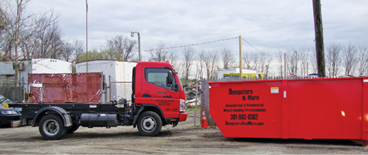
While it wasn’t a huge revenue boost, adding dumpster services didn’t have a downside for Mowing & More.
Photo courtesy of Mowing & More
That made sense because residential clients who purchase Mowing & More’s landscaping services would be more likely to hire a full-service junk removal company that provided the loading labor, Stern says.
The dumpster service is pretty simple. “It wasn’t a huge risk, and that is one of the reasons why we decided to move forward with it,” he says. But there also has not been a major return. Dumpster services made up 10 percent of the company’s overall revenue in 2014, and 5 percent in 2015.
Stern charges $375 to rent a dumpster for seven days, and $5 for each additional day. This fee allows for hauling 2.5 tons of debris, with a surcharge for extra tonnage.
As Stern says, since his business needs the service, too, the waste-hauling add-on is a win regardless of the size of its client base. “There really was no down side to doing this,” he says.
Cleaning time
Michele Collins had spent years working for garden centers before she decided to launch her own garden company in 2000. At the time, Collingwood, Ontario, was a ski town that attracted mostly part-time residents with vacation homes, though that has since changed with new business in the area.
“When I started the business it was extremely seasonal,” says Collins, who decided to add maid services to complement the outdoor piece.
Collins had never cleaned homes before, so she decided to practice a bit before officially bringing the offering into her business mix. “I cleaned some friends’ and families’ homes for free to get my groove going,” she says. “Then, I went from there.”
Referrals quickly built up the house cleaning division, and the same went for gardening. The services require different staff and equipment – cars for cleaning services and trucks for gardening. There is some cross-over with clientele, but most customers use one service or the other.
Cleaning adds consistency to the cash flow. “For a gardening client, it might be a one-time (installation) job or to get their gardens back in order for the season,” Collins says. “I have retained some cleaning clients easily for 10 to 13 years, since I started the business.”
But, the service comes with finicky customers with lots of personal preferences. “Every client is different,” Collins says.
“Some need you to pick up certain pieces of furniture to clean underneath, and others like certain products. They know what they want and don’t want. You have to find out what makes them happy.”
Collins does this by maintaining detailed records of clients’ requests. Their likes and dislikes are recorded and reviewed before cleaning. To be sure, there’s a significant trust factor associated with entering a client’s home and cleaning the places inside that no one else but someone who lives there might see.
So, Collins must hire carefully and train employees to follow meticulous orders. “I still do the work,” she says. “I may not be in the field every day, but my clients see.”
Collins spends most of her “field time” in the garden because she personally oversees that division. A house cleaning manager can “look after that end of the business with her eyes closed,” she’s so experienced. “But, she is not a gardener,” Collins says. So while the two services are true complements, they require individual oversight and expertise.
“You have to be a people person for both services, and willing to do some of the work yourself.” Michele Collins, The Rake and Broom
As for crew size, Collins likes to staff three-person cleaning teams so they can efficiently clean homes. Also, cleaning crewmembers trade up tasks at each house to avoid fatigue.
Just how productive can a cleaning crew be? “Yesterday, we cleaned four 7,000-plus square foot homes and there were four of us,” Collins says. Gardening and cleaning are equally profitable, but Collins says there’s more run-around with plant specification and materials gathering for gardening.
The cross-promotion Collins does is mainly ensuring that clients know she does both services. Because the company is called The Rake and Broom, they recognize the indoor/outdoor maintenance scope. And she’ll casually bring up the fact that she does gardening or house cleaning, to existing clients on both sides of the business.
But many clients enjoy working outdoors. “I have one client we visit every week to clean a house that’s roughly 7,500 square feet,” says Collins, relating that 6,000 square feet has become the norm in her area.
“But she and her husband do their own gardening because that’s what they love to do.”
As for Collins, she loves both sides of the business for different reasons. The gardening fulfills her passion for plants and the outdoors.
House cleaning brings great satisfaction, “and it takes determination,” she says. “You have to be a people person for both services, and willing to do some of the work yourself.”
Digging new business
While landscaping projects are usually funded by disposable income, if you’ve got a septic problem, you’re going to fix it. “For that reason, we stay pretty busy with excavation,” says David Hook, president of D&R Landscaping & Excavating Co., in Ferndale, New York.
Excavating is about 50 percent of the overall business, and Hook says over the years this division has steadily grown. “We have developed relationships with builders and plumbers who refer business to us,” Hook says.
“He didn’t want to do the business side, he just wanted to run a crew. So, I acquired his business.” David Hook, president of D&R Landscaping & Excavating Co.
Hook first got into this line of work in 2003, when he hired someone with a background in excavating. “It rolled out from there,” he says, adding that the work is similar to landscape installation because both require plans. Except, the visual outcome is not quite as satisfying for excavation, he admits.
“With landscape projects, you get to see what you did, but if you’re following a plan for a septic system, you can make it perfectly beautiful but it’s buried,” he says.
When Hook first started offering excavation, he had only his lineup of landscaping equipment. Skid-steer loaders were the largest machines in the fleet. “You can’t dig a foundation with that,” he says.
At first, the company rented equipment to complete larger excavations such as digging home foundations. Over time, Hook has invested in machinery once he knew he could keep it in service with work.
And, there is plenty of it in the area, he says. “Anytime we are digging in the dirt for drainage, foundations, septic system, water lines, electric lines – that’s considered excavation. When we’re just scratching the surface, that’s landscaping.”
The services go hand-in-hand, and crews are cross-trained with the experienced professionals managing those jobs. “I have three people who do not need my supervision at all,” Hook says. “They can read a set of plans and go to work to do what they need to do.”
In fact, good people have been the key to expanding this division. “If you have one good person, then that guy can run a crew,” he says, relating that this is also how the company moved into the concrete sector. “I had always played around with doing flatwork and sidewalks, but I never did pour foundations. Last year, we got into that.”
“With landscape projects, you get to see what you did, but if you’re following a plan for a septic system, you can make it perfectly beautiful but it’s buried.” David Hook, president of D&R Landscaping & Excavating Co.
Pouring concrete foundations complements excavation. Hook purchased a set of concrete forms to pour foundations and he brought an experienced mason on board who had a business of 20 years that he wanted to turn over. “He didn’t want to do the business side, he just wanted to run a crew,” Hook says. “So, I acquired his business.”
Now, D&R can keep an excavation job from start to finish. And that is especially helpful since pure excavation jobs are not as profitable as landscaping (usually a 25-percent margin for excavation vs. 40 percent for landscaping). That’s because there’s simply more competition in this arena, Hook says.
But by offering excavation and concrete, Hook is likely to hold on to that most profitable piece of a complete job. “That keeps us in touch with customers and lets us control a complete job,” he says.
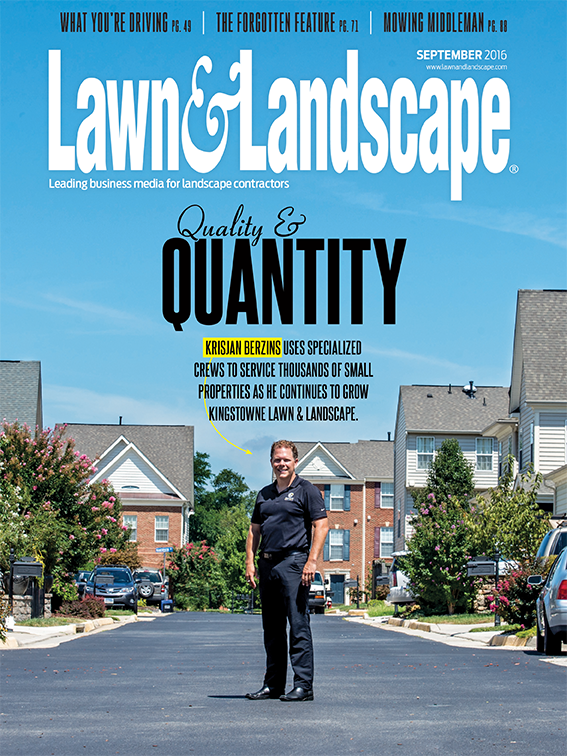
Explore the September 2016 Issue
Check out more from this issue and find you next story to read.
